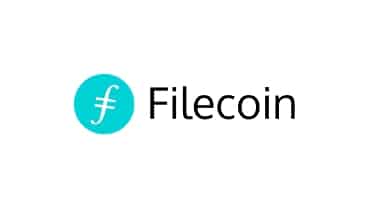What is Generalized Mining (Mining 2.0)?
Last updated: 10th March 2019
Generalized mining is the provision of a supply-side service by a third party to a decentralized network in exchange for compensation, usually in the form of the network’s own currency.
One example of generalized mining in action is the prototypical proof-of-work mining that takes place on the Bitcoin protocol. In this, miners compete to find a nonce value such that the resulting hash of the block header is below a target value. If a miner is able to find a nonce that satisfies this condition, they will be permitted to add the next block to the Bitcoin blockchain and be rewarded in bitcoins for doing so.
The above is an example of generalized mining, as the miner is providing a service to the network by confirming pending transactions that have taken place on the Bitcoin network as well as further securing it against malicious actors. Without such a service, transactions would not be confirmed and the network would be vulnerable to attack, leading to its eventual disuse.
However, provision of supply-side services is not just limited to mining, other examples include:
- Staking (Ethereum Casper Upgrade)
- Market making (0x Relayers)
- Storage space provision (Filecoin)
- Transcoder (Livepeer)
Staking (Ethereum Casper Upgrade) – Instead of confirming transactions and producing blocks through proof-of-work mining, the same thing can be done through proof-of-stake mining. In this, miners stake their cryptocurrency in exchange for the opportunity to be chosen to add the next block to the blockchain and be rewarded for doing so. One notable example of this supply side service is the planned Ethereum update known as Casper, that would see the Ethereum blockchain switch from a proof-of-work model to proof-of-stake.
Market making (0x Relayers) – Another example of a supply-side service that a third party could provide to a growing crypto network is in the form of market making for decentralized exchanges. 0x is a decentralized exchange that relies on what are known as relayers to match buyers and sellers of digital assets and thus receive a fee in 0x tokens (ZRX) for doing so.
Storage space provision (Filecoin) – Filecoin is a decentralized storage network that allows participants to purchase disc space depending on their needs. Filecoin miners can rent out their excess storage and receive filecoins for doing so.
Transcoder (Livepeer) – Transcoding is the process of taking a video in one format and converting it into many other formats in order to make it playable on a majority of devices. Generalized miners can take up the role of video transcoders on the Livepeer network by performing this service for those who require it, and thus be rewarded in Livepeer tokens (LPT) for doing so.
As can be seen from the examples above, there are numerous types of supply-side services that can be performed by third parties on a decentralized network, it very much depends on the nature of the platform.
Generalized Mining & Crypto Funds
A theme is emerging wherein crypto funds are taking a stake in these networks through the purchase of their native tokens, and in order to aid in their growth, performing these supply-side services. Using Filecoin as an example, if individuals were interested in purchasing storage space using filecoin but discovered that none was being offered, then the platform is likely to fail. However, well capitalized cryptocurrency funds are able to offer an ample supply of storage space in order to ensure demand can be met. With this, new decentralized networks such as Filecoin, who may struggle to find individuals willing to rent out their storage space no longer have a supply-side issue, and instead, can focus on acquiring users on the demand side. This intervention by cryptocurrency funds can help accelerate a decentralized platform’s network effect, and thus, increase its likelihood of success.

This method of cryptocurrency funds and venture capitalists investing in a decentralized network through generalized mining practices stands in contrast to the more typical ways an institution may invest in these networks, including:
- An equity stake
- Simple Agreement for Future Tokens (SAFT)
Equity stake – A cryptocurrency fund could purchase a percentage ownership of the company behind a decentralized network and thus gain exposure to the tokens.
SAFT – A SAFT is an investment contract between an investor and the developers of a decentralized network, stipulating that the investor receive a percentage of the network’s native tokens in exchange for the developers receiving funding to build said network.
Generalized mining can now be added as a new framework for how investors can aid in the growth of a decentralized network.
Conclusion
To conclude, generalized mining is the provision of a supply-side service by a third-party to a decentralized network in order to aid in its growth.
Examples of supply-side services that a third-party may perform include staking, market making and renting out storage.
Generalized mining is emerging as a new framework with which cryptocurrency funds can use to participate and help in the growth of their cryptocurrency investments. It stands in contrast to the more typical frameworks that a fund may use to invest in a decentralized network, including taking an equity stake and forming a SAFT agreement.

